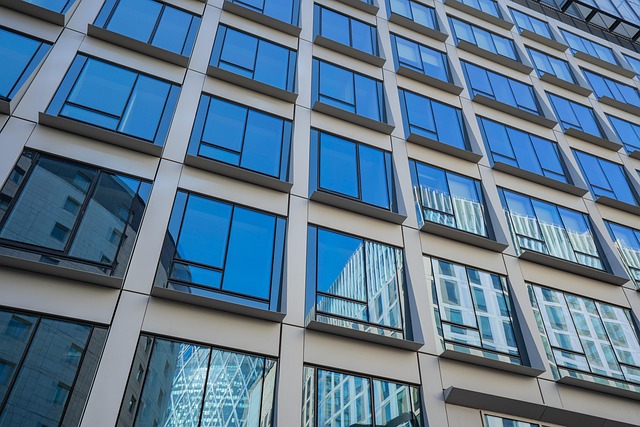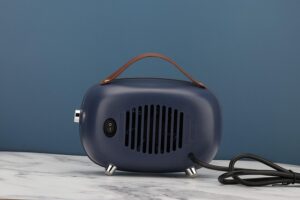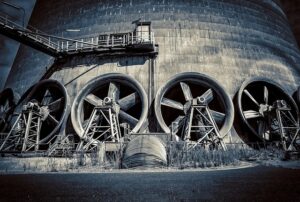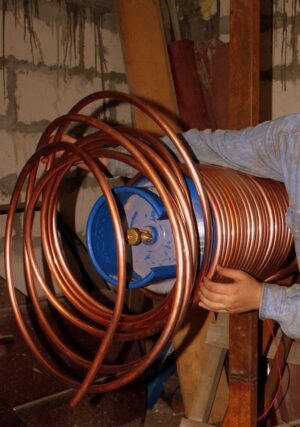Industrial doors require robust systems like heavy-duty air curtains to manage high-traffic areas, prevent energy loss, and maintain climate control in manufacturing environments. Quiet-running air curtains offer advanced protection, enhancing operational efficiency while reducing noise and energy consumption. These air barriers seal entry points, control temperature, and prevent contamination, making them ideal for various industrial applications including warehouse entrances, manufacturing air barriers, and cold storage entrances. Regular maintenance ensures optimal performance and cost savings.
In today’s noisy industrial landscapes, efficient air management is key. Traditional industrial door solutions can create unwanted noise pollution, disrupting work environments and surrounding communities. This article explores the quiet-running air curtain as a game-changer for factories. We delve into the challenges of industrial doors and how these innovative air curtains offer a powerful yet silent solution. By understanding their unique features and benefits, we highlight why they are becoming an essential tool in optimizing factory operations while minimizing environmental impact.
- Understanding Industrial Door Challenges and Their Impact
- Introducing Quiet-Running Air Curtains: The Efficient Solution
- Key Features and Benefits for Factory Environments
- Implementation and Maintenance: Ensuring Optimal Performance
Understanding Industrial Door Challenges and Their Impact

Industrial doors play a vital role in the smooth operation of factories and warehouses, serving as critical entry points for materials, vehicles, and personnel. However, these large opening barriers often present unique challenges that can impact overall efficiency and productivity. High-traffic areas require robust door systems like heavy-duty air curtains to ensure optimal performance while minimizing energy loss.
In manufacturing environments, where maintaining ideal industrial climate control is essential, traditional door solutions may struggle to keep out drafts, humidity, and even pests. Warehouse entrance barriers that are not energy-efficient can lead to significant losses in terms of heating or cooling costs, especially in large cold storage entrances. Therefore, implementing the right air curtain for industrial doors can help improve both operational efficiency and environmental control, making them indispensable components in modern factory settings.
Introducing Quiet-Running Air Curtains: The Efficient Solution

Introducing Quiet-Running Air Curtains: The Efficient Solution for Industrial Doors
In today’s competitive industrial landscape, maintaining optimal conditions within factories and warehouses is paramount. One often-overlooked component in achieving this is effective door protection and climate control. Enter quiet-running air curtains—a game-changer in the realm of industrial door systems. These heavy-duty air barriers are designed to provide superior protection at your warehouse entrance or loading dock, ensuring a seamless transition between interior and exterior spaces while maintaining energy efficiency.
By employing advanced technology, these air curtains offer a powerful yet quiet performance, ideal for factories with strict noise control regulations. They act as a robust shield, preventing cold storage entrance drafts from escaping and maintaining industrial climate control. This not only enhances the overall working environment but also significantly reduces energy consumption compared to traditional methods. Whether you operate in manufacturing or deal with large opening barriers, quiet-running air curtains are the perfect solution for optimizing your factory’s performance while ensuring the safety of your operations.
Key Features and Benefits for Factory Environments

In industrial settings, where efficiency and productivity are paramount, a quiet-running air curtain for industrial doors offers multiple key features and benefits. These advanced systems serve as versatile factory door protection and loading dock protection, sealing entry points to control temperature, prevent contamination, and reduce energy loss. By incorporating heavy duty air curtains into factory door systems, facilities can achieve enhanced industrial climate control while ensuring optimal working conditions.
Moreover, these air curtains are designed for energy efficiency, helping to maintain desired temperatures in cold storage entrances and warehouses. Their robust construction makes them suitable for large opening barriers, with the capability to withstand harsh environmental conditions typically found in manufacturing settings. This factory door protection not only contributes to operational smoothness but also reduces noise levels, fostering a safer and more comfortable working environment for employees.
Implementation and Maintenance: Ensuring Optimal Performance

Implementing a quiet-running air curtain for industrial doors is a strategic move to enhance both productivity and comfort within factories. These advanced systems serve as versatile solutions, ideal for various applications such as warehouse entrance barriers, manufacturing air barriers, or even cold storage entrances. When properly installed, they create an effective seal around large opening barriers, preventing unwanted air exchange and ensuring optimal industrial climate control.
Regular maintenance plays a pivotal role in keeping these air curtains functioning at their peak. Simple upkeep measures include cleaning the nozzles and filters to maintain efficient air distribution. Given their heavy-duty nature, these air curtains should be inspected for any signs of wear or damage, especially around door hinges and sealing mechanisms. Upkeeping these components ensures not only optimal performance but also extends the lifespan of the factory door systems, contributing to long-term energy efficiency and cost savings.
Air curtains for industrial doors, like quiet-running models designed specifically for factory environments, offer a compelling solution to streamline operations while mitigating noise pollution. By efficiently controlling air flows and minimizing noise levels, these innovative systems enhance worker comfort, improve safety communication, and contribute to a more sustainable manufacturing landscape. Implementing this technology is a strategic move towards optimizing factory performance and creating a quieter, more productive work environment.






